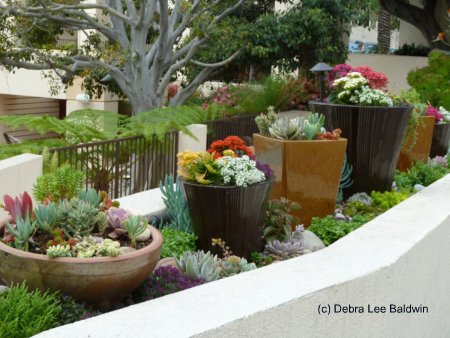

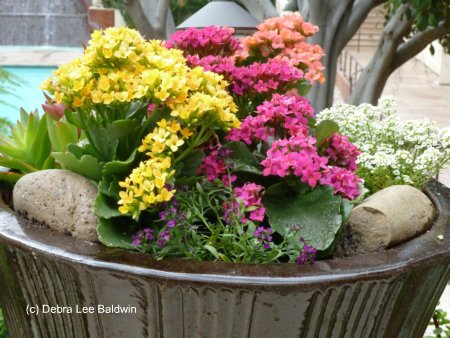

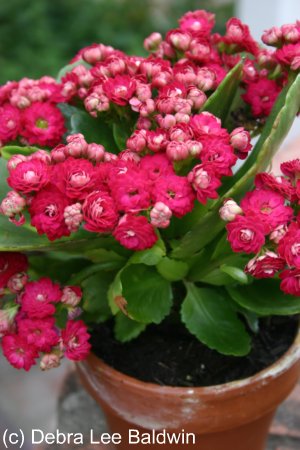


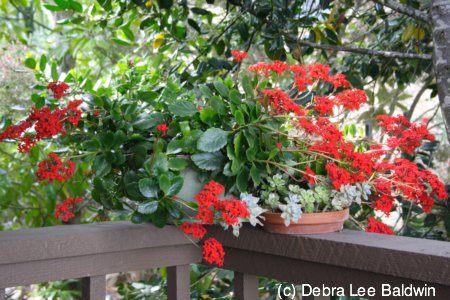
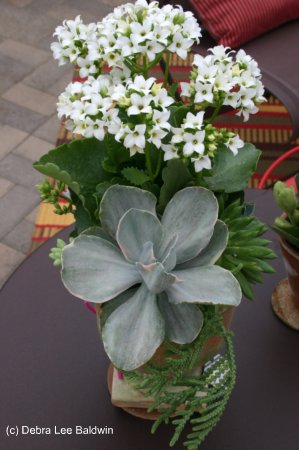
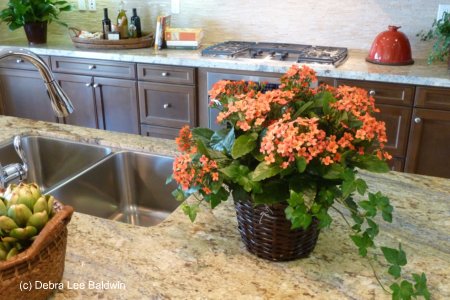










I have always liked kalanchoes….you sound indifferent towards it.
Hi, Darla — Hm. Yes, I guess I am. But there are so many kalanchoes that are interesting primarily for their foliage, such as silvery gray and fuzzy panda plant (K. tomentosa) and bright red paddle plant (K. luciae). It’s not fair that this one gets all the attention! Debra
I just happened to have one of these in a spring arrangement that was given to me by a friend. Great information, thanks!
Annelie
You’re welcome! It is a glorious spring bloomer. — Debra
Kalanchoe blossfeldiana is what I like to call the gateway succulent. Not certain what it is, cute, widely available, and a start to getting into succulents. I think we got our first one from our neighbor who passed one over the fence to us. I think we were still not sure what should grow in or outdoors, but at that price worth experimenting with and outside planting. It did great for us in SF. Matti
Hi, Matti — It’s a good one for the Bay Area, providing you protect it from frost. I like the term “gateway succulent.” Sums it up perfectly! — Debra
what the…fake plants.
I know. Ironic, isn’t it, that this one is nearly bulletproof? It’s the closest thing to plastic (or silk, as the case may be) as any flowering plant. — Debra
From Madagascar ‘that country called Africa’ I’ll count mine as indigenous/native ;~) It did start as part of a potplant arrangement years ago, a wedding anniversary present from an old friend, no longer with us. Today I was retrieving vigorous new bits and starting again.
I would LOVE to visit Madagascar and South Africa someday, especially to see where so many of my favorite plants come from, but also the amazing wildlife. Thanks very much for stopping by! — Debra
I love kalanchoe. Many years ago I successfully grew a huge flower bed with kalanchoe and roses. Roses don’t usually “share” their space well. Very nice photos Debra.
What an interesting combination! Makes me wonder what color/s the roses were, and which colors of supermarket kalanchoes you chose to go with them. Some might work really well, others could be positively painful! — Debra
My goodness Debra, those plants on that countertop look real. 🙂 I’ve never grown one outdoors, but I can see it in a desert climate. Honestly, they remind me of supermarket plants.~~Dee
Good point, Dee, they’re outdoor plants only in very mild climates. Even where I live, in the foothills north of San Diego, the climate is too cold in the winter and too hot in the summer for them. But they’re fine closer to the coast. — Debra
Don’t throw it away, they will bloom again! 🙂
Yes, but the plants do tend to look more and more ratty, with fewer flowers, after several rounds. — Debra
Wow those are amazing Kalanchoes! What i only have in my mother’s garden are the Kalanchoe pinnata and K. daigremontana. They are so different in flowering habits than those you have. I am sure they can withstand neglect also, being succulents. They are the plants suited for me, especially when i leave town.
Welcome, Andrea, all the way from the Philippines! The kalanchoes you mention are in a subcategory called bryophyllum (it was once a separate genus). One characteristic is that they form plantlets along leaf margins. These fall off and root if they can. Some gardeners consider them weeds, but I’ve never had a problem with them. Bryophyllums also produce lovely panicles of bell-shaped, satiny orange flowers. Very different from those of K. blossfeldiana. — Debra
Beautiful pictures especially the calandiva.
Thanks, Michele. I’m continually amazed at what hybridizers come up with. Creating new cultivars is an art form. — Debra
Not sure about the throwaway part in the tropics -here people have their plants for YEARS. I have a yellow one for six years now with the most architectural foliage when not in bloom-people actually remark more on the foliage than the flower. The foliage gets massive when not in bloom. Haven’t seen any rattiness yet, but perhaps its that particular type.